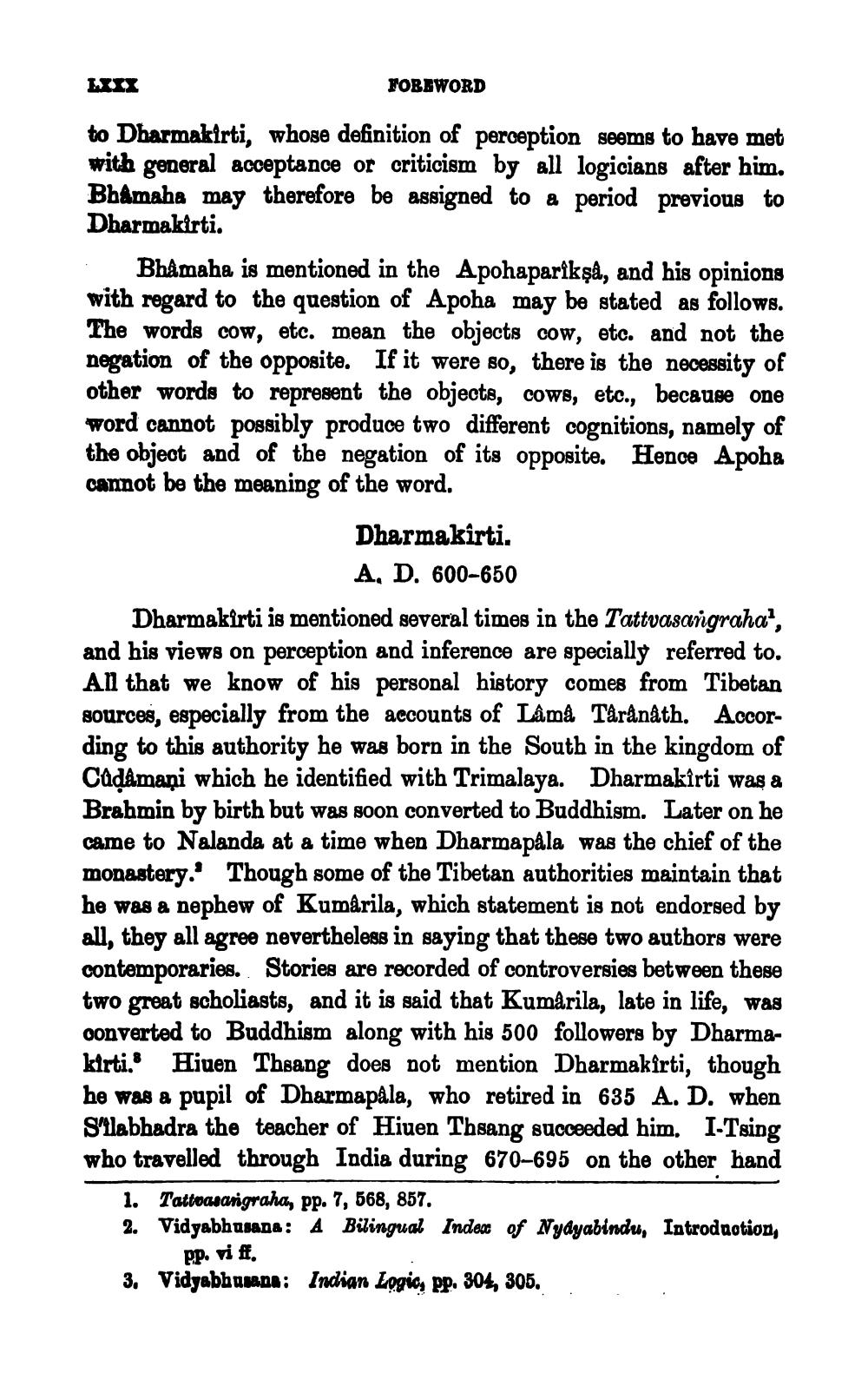________________
LXXX
FOREWORD
to Dharmakirti, whose definition of perception seems to have met with general acceptance or criticism by all logicians after him. Bhamaha may therefore be assigned to a period previous to Dharmakirti.
Bhamaha is mentioned in the Apohapariksa, and his opinions with regard to the question of Apoha may be stated as follows. The words cow, etc. mean the objects cow, etc. and not the negation of the opposite. If it were so, there is the necessity of other words to represent the objects, cows, etc., because one word cannot possibly produce two different cognitions, namely of the object and of the negation of its opposite. Hence Apoha cannot be the meaning of the word.
Dharmakirti.
A. D. 600-650
ฺ
Dharmakirti is mentioned several times in the Tattvasangraha1, and his views on perception and inference are specially referred to. All that we know of his personal history comes from Tibetan sources, especially from the accounts of Lâmâ Târânâth. According to this authority he was born in the South in the kingdom of Cudamani which he identified with Trimalaya. Dharmakirti was a Brahmin by birth but was soon converted to Buddhism. Later on he came to Nalanda at a time when Dharmapâla was the chief of the monastery. Though some of the Tibetan authorities maintain that he was a nephew of Kumarila, which statement is not endorsed by all, they all agree nevertheless in saying that these two authors were contemporaries. Stories are recorded of controversies between these two great scholiasts, and it is said that Kumarila, late in life, was converted to Buddhism along with his 500 followers by Dharmakirti. Hiuen Thsang does not mention Dharmakirti, though he was a pupil of Dharmapala, who retired in 635 A. D. when S'ilabhadra the teacher of Hiuen Thsang succeeded him. I-Tsing who travelled through India during 670-695 on the other hand
1. Tattoasangraha, pp. 7, 568, 857.
2. Vidyabhusana: A Bilingual Index of Nyayabindu, Introduction, PP. vi ff.
3. Vidyabhusana: Indian Logic, pp. 304, 305.




